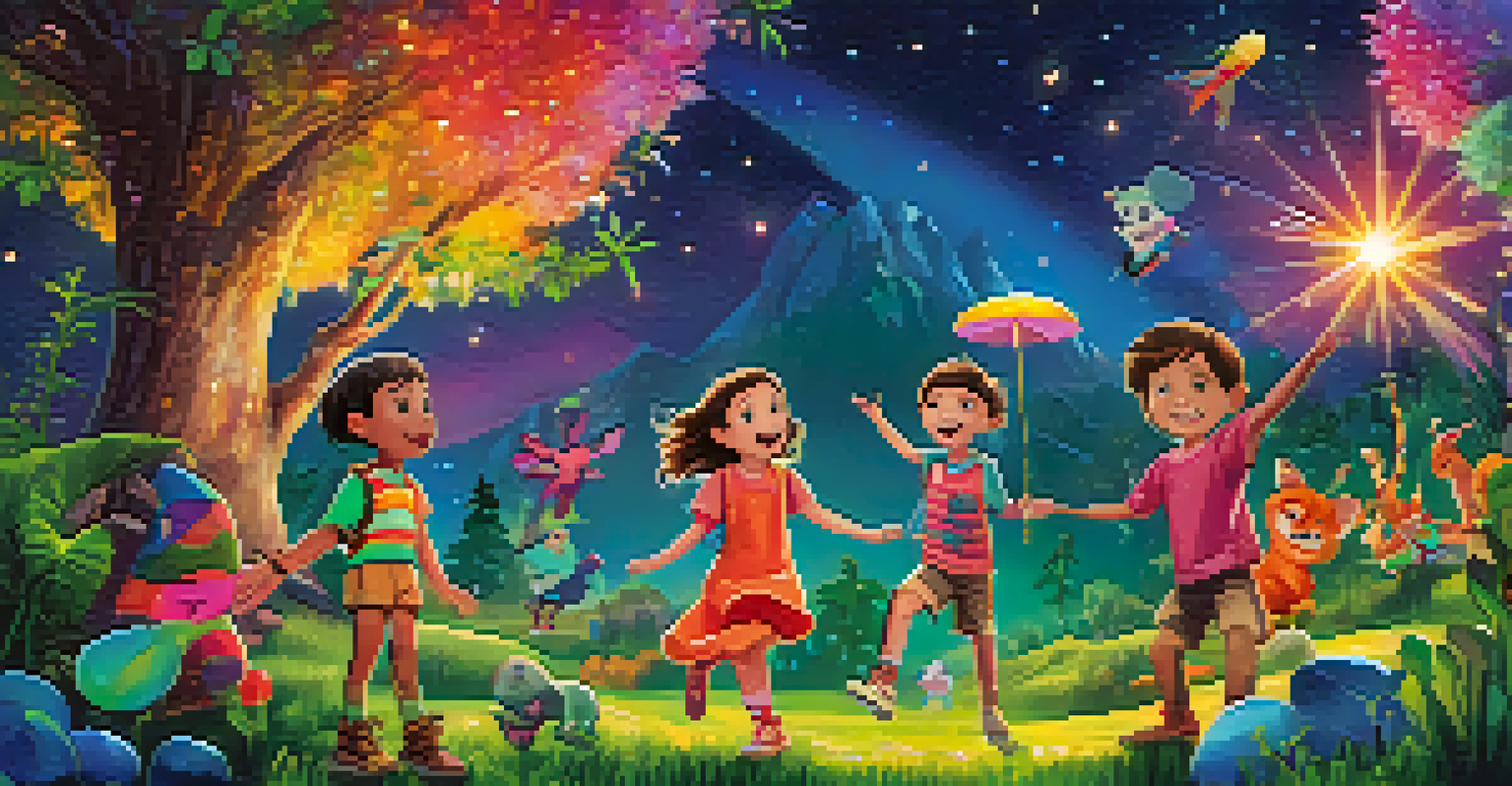Film Poster Design: The Art of Visual Storytelling

Understanding the Role of Film Posters in Marketing
Film posters serve as the first visual touchpoint for audiences, encapsulating the essence of a movie in a single image. They are not merely promotional tools; instead, they act as a gateway, inviting viewers into the film's world. A well-designed poster can spark interest, evoke emotions, and set the tone for the cinematic experience ahead.
A poster is a window into the soul of the film, capturing its essence in a single breathtaking image.
Through striking imagery and thoughtful design, posters convey essential elements like genre, mood, and themes. For instance, a horror film may use dark colors and ominous imagery to evoke fear, while a romantic comedy might feature vibrant colors and cheerful characters. This immediate communication helps audiences quickly identify whether a film aligns with their interests.
Moreover, film posters have a lasting cultural impact, often becoming iconic representations of their respective films. Think of classics like 'Jaws' or 'Star Wars' – their posters are as recognizable as the films themselves. This underscores the importance of creativity and innovation in film poster design.
Key Elements of Effective Film Poster Design
The heart of an effective film poster lies in its design elements: imagery, typography, and color scheme. The central image often serves as the focal point, capturing the viewer's attention and hinting at the film's narrative. Typography, on the other hand, is crucial for conveying the film's title and tagline in a way that complements the visuals.

Color plays a significant role in setting the mood and evoking emotions. For instance, a poster for a thriller might utilize stark contrasts and dark hues, while a family film may embrace bright, warm tones. These choices create an immediate emotional response, guiding potential viewers' expectations.
Film Posters as Visual Gateways
Film posters serve as the first visual touchpoint for audiences, encapsulating the essence of a movie and inviting viewers into its world.
Additionally, a successful film poster harmonizes these elements into a cohesive visual story. Every aspect should work together to reflect the film's identity and resonate with its target audience, creating a compelling invitation to the cinema.
The Influence of Genre on Poster Design
Different film genres have distinct visual languages, which heavily influence poster design. For example, horror posters often rely on unsettling imagery and shadowy colors, while romantic comedies typically feature bright palettes and smiling characters. Understanding these genre conventions is key for designers aiming to attract the right audience.
Good design is all about making other designers feel like idiots because that idea wasn’t theirs.
Moreover, genre-specific elements can signal to viewers what type of experience to expect. An action film might showcase dynamic poses and explosive graphics, while a documentary may utilize real imagery to convey authenticity. This adherence to genre norms helps viewers quickly categorize and connect with the film's intent.
As genres evolve, so too do their visual representations. Designers must stay attuned to these shifts, balancing tradition with innovation to create fresh, engaging posters that captivate today's audiences.
The Art of Typography in Film Posters
Typography in film posters is more than just text; it’s an art form that can greatly influence a viewer's perception. The choice of font, size, and placement all contribute to the overall aesthetic and feel of the poster. For instance, a bold, jagged font might suggest an action-packed thriller, while a delicate script could hint at a romantic drama.
Beyond aesthetics, typography also plays a functional role by ensuring legibility and clarity. It needs to be easily readable from a distance, as posters are often viewed in public spaces like theaters or on city streets. Designers must strike the right balance between creativity and practicality.
Key Design Elements for Impact
Effective film posters harmonize imagery, typography, and color to create a cohesive visual story that resonates with the target audience.
Additionally, unique typography can become a signature element of a film's branding. Memorable fonts can evoke nostalgia or excitement, making them instantly recognizable and adding to the film's overall identity.
Color Theory and Its Impact on Film Posters
Color theory is a fundamental aspect of film poster design, as colors evoke specific emotions and associations. For instance, red can signify passion or danger, while blue might communicate calmness or sadness. Designers utilize these psychological effects to craft posters that resonate emotionally with their audience.
Understanding the context of colors within a genre is also essential. A horror film might employ a palette of blacks, reds, and grays to create a tense atmosphere, while a family movie might use bright and cheerful colors to convey joy and warmth. These choices help set the tone and expectations for the viewer.
Moreover, color can be used symbolically to convey deeper themes or messages within the film. For example, the use of green might allude to themes of envy or greed, subtly hinting at the film's underlying narrative.
Creating Iconic Film Posters: Case Studies
Examining iconic film posters can provide valuable insights into effective design strategies. Take the 'Psycho' poster, for example; its stark black and white imagery, combined with bold typography, immediately conveys a sense of suspense and intrigue. This simplicity and clarity capture the film's essence perfectly.
Similarly, the 'Breakfast at Tiffany's' poster uses elegant typography and a striking image of Audrey Hepburn to create an iconic representation of glamour and sophistication. Such designs not only attract viewers but also resonate deeply within popular culture, often becoming timeless symbols of the films themselves.
Digital Age Redefines Poster Design
The digital age has transformed film poster design, introducing new tools and platforms that expand creative possibilities and enhance collaboration.
Through these case studies, designers can learn how to create memorable posters by marrying aesthetics with storytelling, ensuring that each design captures the spirit of the film while standing out in a crowded market.
The Evolution of Film Poster Design in the Digital Age
The digital age has transformed film poster design, introducing new tools and platforms that expand creative possibilities. Designers now have access to advanced software that allows for intricate graphics and effects, pushing the boundaries of what can be achieved visually. This evolution has led to a resurgence in innovative and diverse poster designs.
Additionally, the rise of social media has altered how posters are disseminated and consumed. Designers must now consider how their work will appear in various formats, from large billboards to tiny smartphone screens. This shift necessitates adaptability and creativity to ensure that posters maintain their impact across different platforms.

Moreover, the internet allows for greater collaboration and inspiration among designers globally. Sharing ideas and techniques has resulted in a blending of styles, leading to a rich tapestry of film poster designs that reflect contemporary culture and trends.